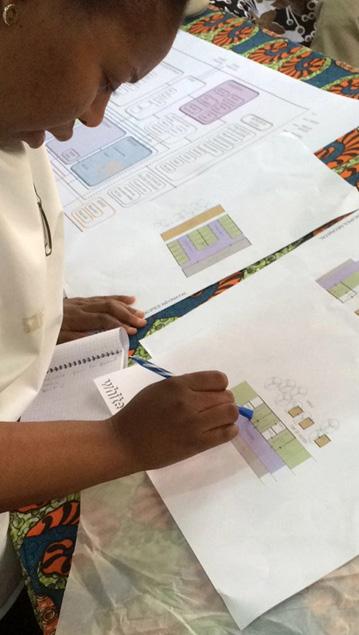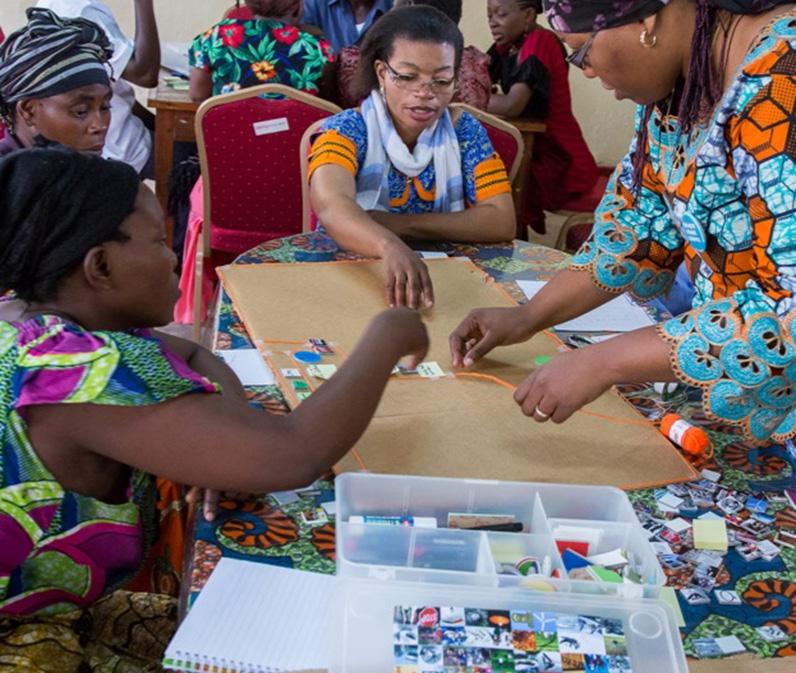
2 minute read
A multidisciplinary collaboration
A multi-disciplinary process
The unique process behind this project uses participatory design to combine three types of expertise – first-hand knowledge (Panzi Hospital), practice experience and current research – in the fields of architecture, healthcare and sustainability.
Advertisement
Participatory design
The ongoing dialogue with staff, patients and family members at Panzi Hospital has been a unique strength of the project. In addition to providing the necessary information about the needs of the hospital and the local environment, it has also been crucial for fostering a sense of involvement towards the project.
PHOTO: LIS PERSSON

Panzi Hospital
Research
Practice Healthcare
Current healthcare provision Current healthcare practice was understood through interviews and workshops with patients, staff, and family members of Panzi Hospital, conducted by healthcare researchers from Art of Life and Birth and University of Gothenburg.
Care model Current research on personcentred, holistic, maternal, and neonatal care was the foundation as a new care model was developed by healthcare researchers from Art of Life and Birth and University of Gothenburg.
Hospital planning The requirements of the care as communicated by Panzi Hospital, and the conclusions from the research, were translated into a scheme for the project by White Arkitekter. The optimal ways of organising functions and flows in order to support the developed care model were designed based on substantial experience in hospital design. Architecture
Architectural preconditions A site visit was carried out by the design team and technical staff was consulted to create an overview of how the site and hospital functions today. Current topography, functions, flows and buildings were mapped and studied.
Principles of healing architecture A strong theoretical basis exists for creating a physical environment that supports wellbeing and the healing process – Principles of Healing Architecture. The principles were extensively discussed in workshops with representatives from Panzi Hospital, CVA and White Arkitekter.
Design and physical planning The design was developed by White Arkitekter through an iterative process involving sketching, 3D-modelling, drawings, simulations, and physical models. The results were continuously modified after discussions with the rest of the team. Technical solutions were studied and chosen together with WSP and incorporated in the design. Sustainability
Context & climate The local preconditions were mapped through climate, wind and sun analysis. Local construction methods, availability of materials and other design and construction issues were mapped out. Finding accurate and current data proved a big challenge.
Sustainable strategies A selection of current research and exemplary case studies involving bioclimatic design, both from national and international examples, were examined and compiled by White Arkitekter. Primary research was carried out on locally used construction methods, availability of materials and other design and construction issues.
Sustainable design A sustainability analysis by White Arkitekter identified the challenges to be solved in the project and the possible potentials to be developed. This resulted in 4 chosen areas of focus for the project. Based on the sustainability strategies and design tools such as simulations, the goals for the areas of focus were translated into architectural elements and technical solutions.






